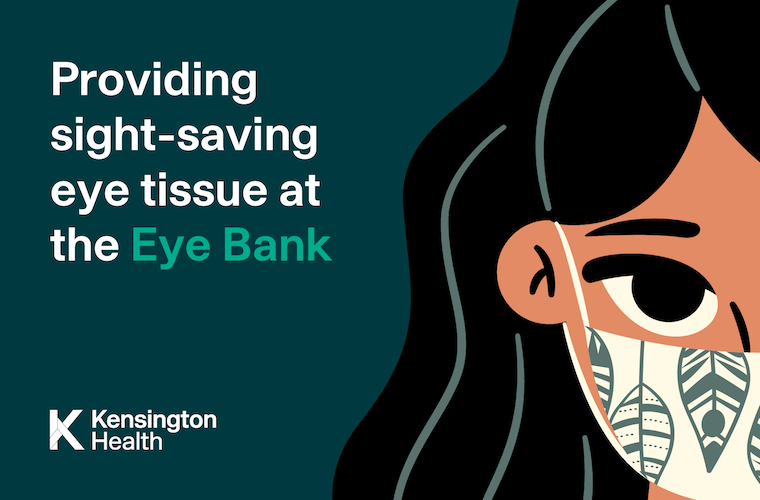
Tissue transplant is a forgotten health care topic as COVID-19 has shifted the focus of every health conversation. And even though COVID-19 is at the centre of every health care setting, there are many patients with urgent and emergency eye needs that rely on donated eye tissue to see again.
Fifteen months into the COVID-19 pandemic, the eye tissue transplant work at Kensington’s Eye Bank of Canada (Ontario Division) hasn’t stopped. The team often pivoted throughout the pandemic to ensure tissue is available for sight-saving procedures.
For most of the year, work at the Eye Bank was business as usual. Despite providing and processing eye tissue for sight saving transplants, patients do not visit the Eye Bank. They get their surgery done at a hospital, or at an out-of-hospital surgery setting. Despite work continuing during a pandemic, there were still many hurdles the team had to face along the way.
“Aside from a rough start where the Eye Bank was closed for a week due to a potential COVID-19 exposure, I’d like to think we only had minor issues. The biggest challenge at the beginning of COVID-19 is how it impacted the transportation of tissue,” said Christine Humphreys, Director of The Eye Bank of Canada (Ontario Division). “It has actually given us a lot of opportunity to rethink and explore new ways of doing things.”
Prior to the pandemic, the Eye Bank used busses as the main transportation method for donated eye tissues, delivering tissue throughout Ontario. As COVID-19 impacted bus transportation, the Eye Bank shifted to using couriers to transport eye tissue to different health centres across Ontario. This has provided multiple benefits: there are less hands in the mix so tissues are handled more securely and tissues are easier to track.
Tissue volume is another challenge for the Eye Bank. At the beginning of the pandemic, there were many restrictions regarding tissue donation because so much was unknown. Even if a person has pre-registered to become an organ and tissue donor, if they have COVID-19, COVID-19 symptoms or risk factors for COVID-19 at death, their tissue cannot be donated.
“Many people don’t know this, but pink eye (conjunctivitis) can be a symptom of COVID-19,” said Christine. “What we don’t know yet is if this is transmissible by donor tissue.”
Even though testing is not required by Health Canada, testing donors has helped increase tissue donations by ruling out COVID-19 in donors who show symptoms thought to be due to an underlying health condition (COPD or lung cancer). By testing people with COVID-19-like symptoms, and understanding their prior health conditions, it allowed more donors to be accepted.
To date, there has been no recorded cases of COVID-19 detected in our donor population: “We haven’t had a case of undetected COVID-19 because of how well we screen our donors.”
But even with testing and ruling out symptoms and risk factors, tissue availability remains an issue in Ontario and the rest of Canada.
“Even though we’ve been able to provide most of the tissue needed from donors in Ontario, we still had to increase the number of tissues we’ve imported from the United States so surgeries wouldn’t get cancelled. Historically, we didn’t need to rely on importing tissue,” said Christine. “Because of the lack of tissue, we still had to cancel a handful of surgeries when no tissue was available to import from the US.”
To learn more about the work at The Eye Bank, visit: http://bit.ly/2QYYajv